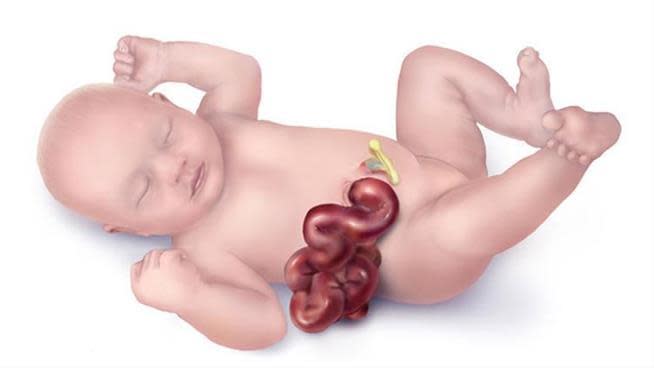Alarming Birth Defect Rises Sharply in Past 20 Years

Gastroschisis prevalence is increasing in the U.S. (Image via Centers for Disease Control and Prevention, National Center on Birth Defects and Developmental Disabilities)
It’s a birth defect the Los Angeles Times calls “bizarre”: gastroschisis, where the intestines (and sometimes other organs) protrude out of a hole in the abdominal wall. And in its weekly “Morbidity and Mortality” report, the Centers for Disease Control and Prevention sounds an alarm. The prevalence of the defect nearly doubled between 1995 and 2005 and it increased another 30% in the seven years following to 4.9 in 10,000 births—but there’s no explanation why.
Related: The 5 Strangest Places Women Have Given Birth
Nearly 2,000 babies are now born in the US with the defect annually. The researchers note that the sharpest jump in prevalence—263% between 1995 and 2012—was among babies born to African-American women under the age of 20, though an increase was seen across every age and racial group, reports US News & World Report. (Still, the prevalence in black mothers “remains lower than in white and Hispanic mothers.”)
Related: How a Couple Birthed 2 Babies, 4 Days Apart
And while researchers have for decades associated young maternal age with gastroschisis, the increased prevalence has coincided with a decline in live births among teens. The defect is often fixed with surgery, but the condition can be life-threatening, with organs exposed to amniotic fluid possibly becoming swollen or infected, triggering longer-term feeding and digestion issues, reports the Times. “We’re really trying to dig into the ‘why’” via federally supported studies, CDC epidemiologist Suzanne Gilboa says.
Related: Woman Got Flu Shot Instead of Birth Control Shot, Sues
So far the only clues are that women who use alcohol or tobacco while pregnant, or who are underweight prior to pregnancy or have an STD, run a greater risk of having a baby with gastroschisis, but whether this contributes to the early development of an infant’s weaker abdominal wall remains unclear. (This virus may be behind some birth defects.)
By Elizabeth Armstrong Moore
More From Newser:
Mariah Carey Engaged to Billionaire
Your Hot Winter Trend: Frozen Pants
This article originally appeared on Newser: Alarming Birth Defect Rises Sharply in Past 20 Years

